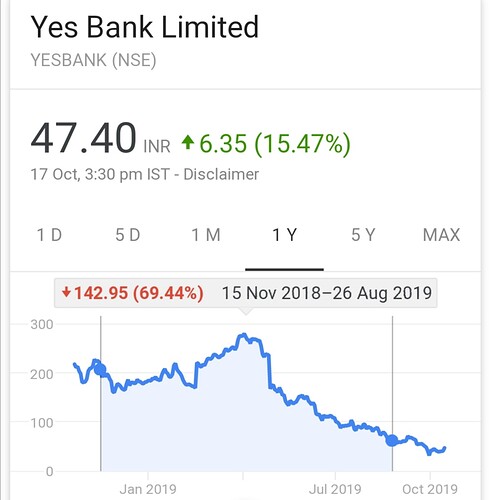Below write up from Kuvera:
"It is not a bull market until the phrase “concentration builds wealth” starts trending. Since I have read it about 50+ times in the last two weeks on Twitter itself, I am assuming the trend is on 
The quote is attributed to Warren Buffet so carries a lot of weight, and is quickly followed up by examples of Gates and Bezos who never diversified, held majority of their wealth in one stock (Microsoft and Amazon respectively) and are the richest people in the world now.
It is a tempting proposition and given some of the examples of concentrated riches thrown around it entices the new investor. Alas, no one tells the same investors about Exxon employees who had all their retirement savings in the company stock and poof it all went belly up one day. And for that matter the thousands of Lehman employees whose company stock-heavy retirement portfolios did pretty much the same in 2008.
Heck, what about the other Ambani who blew a whopping ~$40 bn in his concentrated portfolio in a decade. Or the most famous of them all, Sir Isaac Newton himself who lost a fortune in the stock of the South Sea Company, an investment that left him broke and led him to refer to speculation as the madness of men.
If you start hunting for real-life outcomes of concentrated portfolios you will find more went broke. Take startups, they are super concentrated portfolios for the founding team and 90% or more startups don’t survive the first five years and a teeny weeny percentage actually becomes unicorns. But unicorns get 99% of media coverage creating the illusion that concentration is good.
We actually have a simple way to measure how concentrated portfolios perform vs diversified portfolios outside of rhetoric or anecdotal examples of one or the other.
Here is what we do, we look at 275 largest stocks in the country over the past 3 years. Then we randomly select three portfolios from it at the beginning of Sep-2017 and hold each portfolio till the end of last month.
-
A super-concentrated 1 Stock portfolio i,e 100% invested in one stock
-
A concentrated 5 Stock portfolio i.e 20% invested in 5 stocks each
-
A moderately diversified 15 Stock portfolio i.e 6.67% invested in 15 stocks each
We then run the experiment over one lakh times to ensure that our outcomes are not dependent on luck of the draw. The chart below shows the distribution of portfolio returns (measured as XIRR) that you would expect to achieve in the three portfolios above.
Let’s look at the super-concentrated 1 stock portfolio first. There is a 19% chance that your 1 stock portfolio returned an XIRR above 16%. But that comes with a risk - a huge 29% chance that your 1 stock portfolio would have returned an XIRR below 16% in the last 3 years. So yes you can make it big, but you can also get bowled out the first pitch.
A moderately diversified 15 stock portfolio, on the other hand, has a low 1% chance of achieving an XIRR of over 16% but also has a negligible almost 0% chance of achieving an XIRR of below 16%.
A more clear picture emerges if you think about the distribution of outcomes of a concentrated portfolio vs a diversified portfolio. The outcome of a concentrated portfolio is bar-belled. A high chance of riches and a high chance of going bust. It’s like the samurai code - you live by the sword and you die by the sword.
I am not sure if this translates to how most traders and brokers frame “concentration builds wealth” as that statement has a certainty to it that the data suggest does not exist at all. With concentration, you are taking a big bet. On average that bet will give outcomes worse than a diversified portfolio - it will clearly destroy wealth. We find that the average 3-year XIRR of a single stock portfolio is -3% while that for a 15 stock portfolio is 1.4%. For an index fund, the same is between 5-7% based on Nifty or Sensex indices.
The data is clear - concentration does not build wealth for the average investor with a concentrated portfolio. But for a few people, who will eventually get monickers like the big bull, that concentration will work and make them wealthy. Are you willing to take the risk of going bust to be one of them? If you answer no, then diversify. And when someone tells you ‘concentration builds wealth’ share this data with them."




